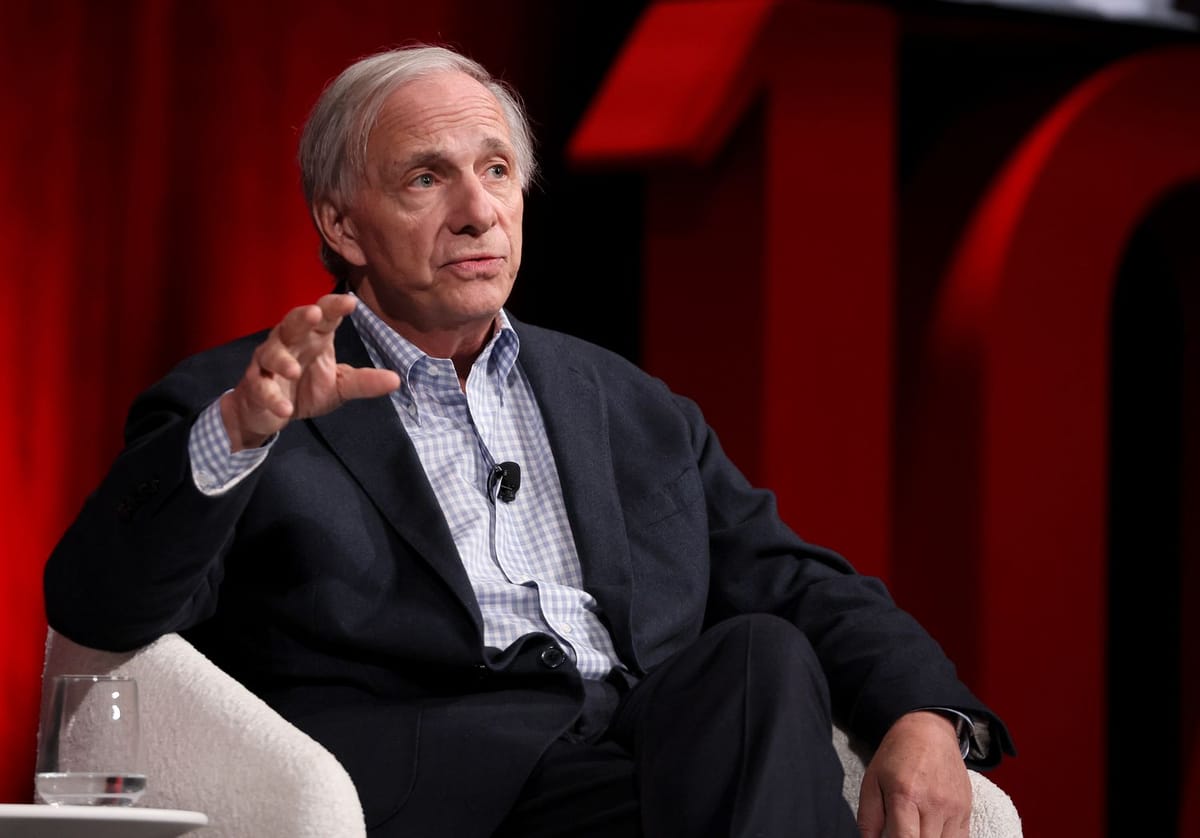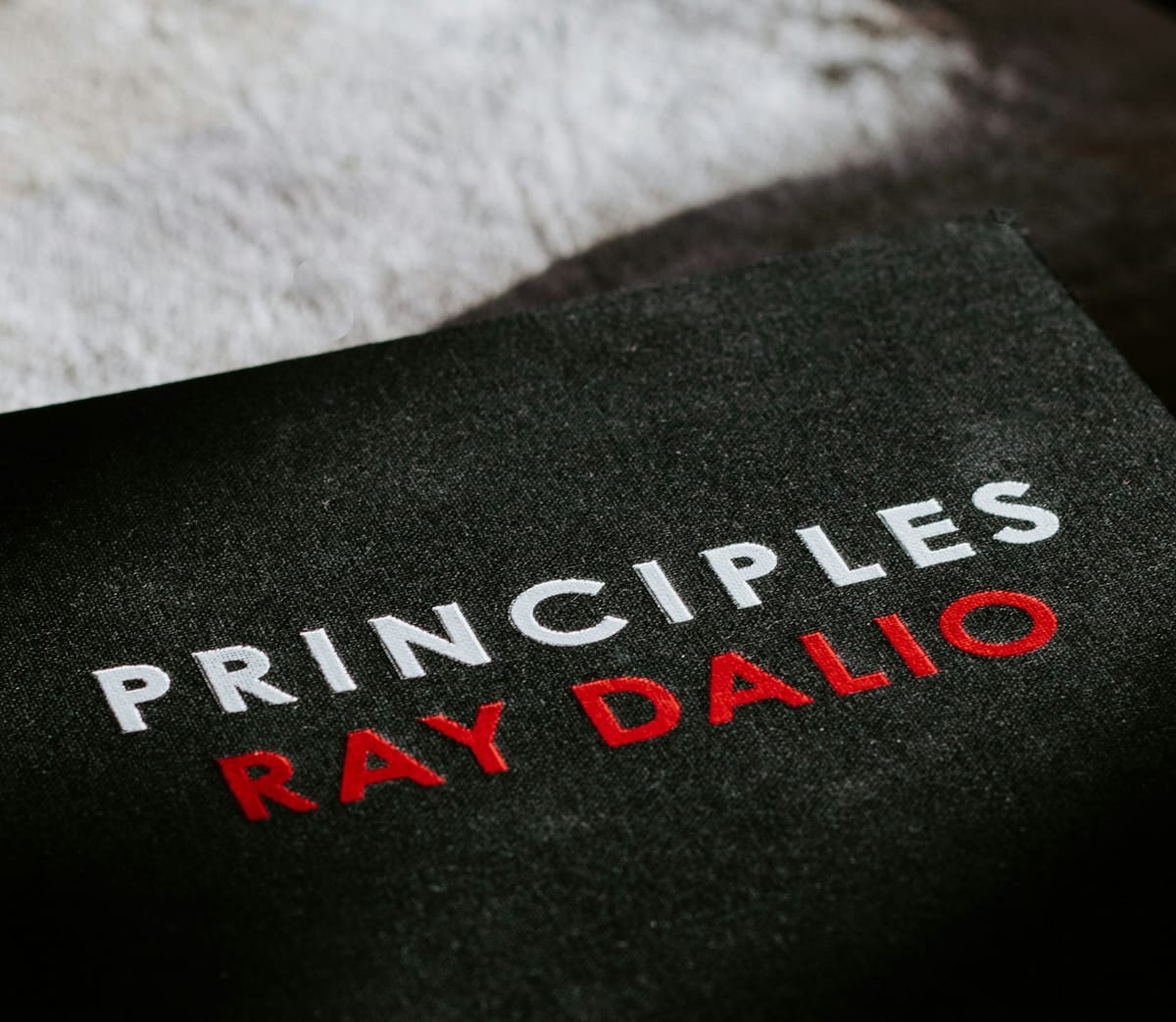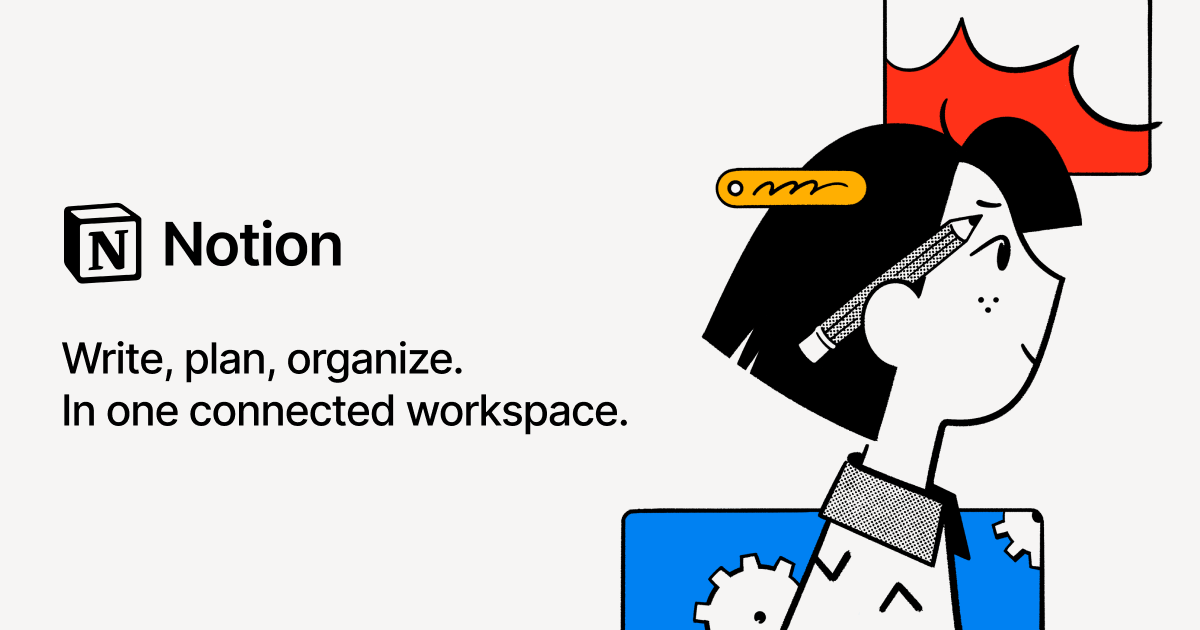Leadership | Ray Dalio: The Art of Starting Over
Leadership Alchemy: Ray Dalio on leadership, radical transparency, and life’s five-step process for success. From Bridgewater to OceanX, discover how his principles of truth, humility, and systems thinking redefine what it means to lead and learn in a complex world.

Special Series: Obsidian Odyssey | Leadership Alchemy
Hi All,
It's all game.
Ray Dalio said. I’ve learned to pay attention to the leaders who break, not the ones who never bend. Because breaking shows you what’s real. It strips away performance. It forces a re-architecture of the self. I want to talk about his comeback story as part of the special series I'm putting together - 'Leadership Alchemy.'
Ray Dalio’s story is that kind of story. Not a victory lap. A rebuild.
He began as a kid caddying on Long Island, absorbed markets like weather, and founded Bridgewater out of a two-bedroom apartment. And then, at the moment he believed he saw destiny most clearly, reality humbled him. What came next is the manual — the one you can hand to any leader who’s rebuilding after a public mistake.
What I Love About Ray Dalio
What I’ve always admired about Ray is that he doesn’t pretend to have all the answers—he builds systems to find them. His mind operates like a bridge between logic and humility: part economist, part philosopher.
He built Bridgewater not around his brilliance, but around a process—a framework that made truth more important than hierarchy. In a world where ego often drives leadership, Dalio made reality his boss.
I love that he treats mistakes as data. To him, pain is feedback, not failure. That mindset turns every setback into a chance to evolve, which is something I try to apply not just in work, but in how I live and lead. I wish I could be like him one day - being in the season of sharing 'lessons learned' with younger generations so that they can also learn from my mistakes and life of ups and downs.
What I Learned From His Leadership
From Dalio, I learned that great leadership isn’t about control—it’s about clarity.
It’s the discipline to define your principles, the courage to test them publicly, and the humility to revise them when they fail.
He taught me to separate ego from truth and to build feedback loops that are brutally honest but deeply developmental. He models what it means to lead through systems of reflection, not emotion.
Dalio’s approach reminds me that long-term success—whether in investing, leadership, or personal growth—comes from running small, consistent experiments and documenting what works. In that sense, life becomes a compounding machine for wisdom.
Here is How He Came Back from Major Setbacks in Life
The Fall
In 1982, Dalio made one of the most humiliating public misjudgments of his career.
He had predicted that the global economy was heading toward a depression following the debt crisis in Latin America. He was so convinced that he publicly debated economists, wrote papers, and positioned his firm, Bridgewater Associates, accordingly.
When the opposite happened — the U.S. economy entered a historic boom — he lost almost everything. Bridgewater shrank to a shell. He had to lay off every employee and borrow $4,000 from his father just to pay the bills.
He described that period as “so painful that it changed me.”
But it was precisely this collapse that became the foundation of his lifelong philosophy of radical transparency, humility, and continuous learning.
The Comeback — Step by Step
1. Radical Self-Confrontation
Dalio began with brutal self-honesty.
He journaled, reflected, and dissected every assumption that led to his failure. He realized his greatest weakness was overconfidence — mistaking conviction for truth.
From that point forward, he adopted what became one of his core principles:
“I learned to be radically open-minded and to seek out thoughtful disagreement.”
He stopped trying to be right, and started trying to see clearly.
2. Starting Small, Rebuilding Trust
After losing everything, Dalio didn’t seek external validation or capital immediately. He rebuilt trust one relationship at a time — starting with old clients, family friends, and his small professional circle.
He ran Bridgewater from his two-bedroom apartment, producing research and advising clients based on data rather than ego. His insight into macroeconomic cause-and-effect — rebuilt from scratch — slowly regained credibility.
This stage was defined by humility, precision, and slow compounding.
3. Creating Systems for Truth
Determined not to repeat his blind spots, Dalio built a culture around decision-making systems rather than personalities.
He developed structured tools to minimize human bias — precursors to what became Bridgewater’s famous “Principles” and idea meritocracy.
He began recording meetings, documenting disagreements, and grading decisions. Every error became an opportunity to refine the algorithm.
He essentially institutionalized his own failure — transforming it into a feedback loop for excellence.
4. Radical Transparency and the Pain-Reflection Loop
Dalio coined a central formula that guided his comeback:
Pain + Reflection = Progress.
Every setback was treated as data. Instead of avoiding discomfort, he leaned into it, extracting insight from the emotional sting of being wrong.
This mental model became the backbone of Bridgewater’s learning culture — one where truth mattered more than politeness, and growth mattered more than ego.
5. Rebuilding with Principles, Not Personality
By the late 1980s, Bridgewater’s philosophy had matured into a disciplined, data-driven investment process.
Dalio trained his team to think in systems, probabilities, and feedback loops rather than opinions or predictions.
This institutional rigor helped Bridgewater weather crises that crushed others — from the 1987 crash to 2008 — because their approach was rooted in process, not personality.
He came back not by chasing success, but by engineering resilience.
6. Turning Failure into Doctrine
In later years, Dalio codified all these lessons into Principles: Life and Work — effectively transforming his near-bankruptcy into a global masterclass in leadership, humility, and systems thinking.
He now teaches that failure is “life’s way of pointing you to what you need to learn most.”
The Essence of His Comeback
In essence, Dalio’s recovery rested on six foundational steps:
- Radical self-confrontation — owning every flaw and bias.
- Starting small, rebuilding credibility through consistency.
- Creating decision systems to remove ego and emotion.
- Turning pain into feedback, not shame.
- Rebuilding culture around truth, not hierarchy.
- Codifying principles to ensure continuity beyond himself.
If you liked this interview, you might also enjoy my post on his book, Principles. It breaks down the five-step process that underpins Dalio’s entire philosophy and shows how to apply it in your own career and decision-making.
Hope you enjoy this—and I’d love to hear from you: Who are the leaders or thinkers that shape how you see the world?

Today, I want to share one of the best interviews on Ray Dalio I've ever seen by one of my favorite journalists and Bloomberg news anchors, Francine Lacqua.
Summary
Ray Dalio reflects on his journey from caddying as a boy to founding Bridgewater Associates, shares insights on leadership, radical transparency, and economic cycles, and discusses his current mission to explore and protect the oceans.
Highlights
- 💡 Ray Dalio was driven not by money but by the "game" of investing—being tested daily in the real world and learning from mistakes, which shaped his philosophy of radical truth and idea meritocracy.
- 🌊 After stepping down from Bridgewater, Dalio shifted focus to ocean exploration through Ocean X, co-founded with his son, aiming to uncover Earth’s last uncharted frontier and raise awareness at global events like the UN Oceans Conference.
- 📉 A major failure in 1979—predicting a debt crisis and missing the market bottom—taught him humility and led to Bridgewater’s culture of open-mindedness, believability-weighted decision-making, and real-time feedback via tools like “The Dot Collector.”
- 🔄 Dalio sees history as cyclical, identifying five key forces shaping global order: debt/economics, internal conflict, geopolitics, nature’s disruptions (e.g., pandemics), and technological progress—all now converging in a period reminiscent of the late 1930s.
- ⚠️ He warns of rising global tensions—financial, technological, military, and political—and believes that only by confronting challenges head-on, rather than fearing them, can societies navigate toward a better future.
Note) The interview summary was put together by AI and reviewed by a human, me. :)
Other Resources and References
Bonus
Bookmark this. If you are also like me who likes to be inspired by watching leaders' interviews and stories, please check out my hand curated interview list. It's available as a Notion notebook. Worth a Read/Watch/Listen - Leadership

Who are the leaders who inspire your definition of character and success? I’d love to hear your thoughts.


![Obsidian Memo]🍁 Returning to the Table: Notes on Thanksgiving, Distance, and Beauty of Gentle Caring Presence](/content/images/size/w720/2025/12/KakaoTalk_20251128_034620737-2.jpg)
![Finance | Leadership] How I Built a Global Career in Finance: A prelude to the upcoming series: Breaking Into Finance](https://images.unsplash.com/photo-1676471049029-f93852da351d?crop=entropy&cs=tinysrgb&fit=max&fm=jpg&ixid=M3wxMTc3M3wwfDF8c2VhcmNofDl8fG1vdW50YWluJTIwZXZlcmVzdHxlbnwwfHx8fDE3NjQwNTgyMjB8MA&ixlib=rb-4.1.0&q=80&w=720)
![Obsidian Memo | Culture Shocks] From Seoul to Toronto to New York to London: A Life in Translation](/content/images/size/w720/2025/10/Emily-in-Paris.jpg)